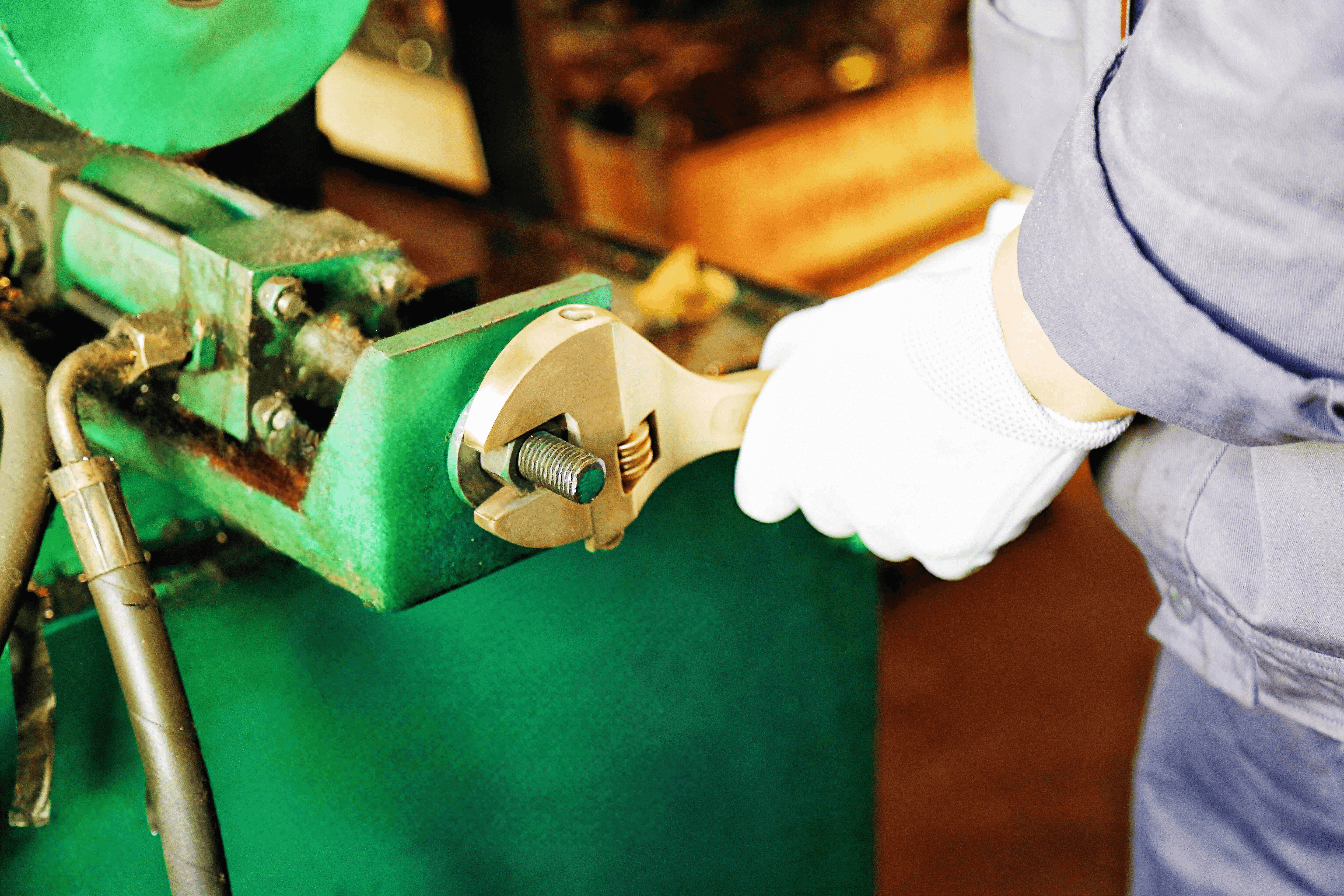การวิเคราะห์เชิงพยากรณ์ที่ขับเคลื่อนด้วย AI เพื่อการจัดการความปลอดภัยอย่างเชิงรุก
การตรวจจับอันตรายแบบเรียลไทม์ด้วย Machine Learning
โมเดลการเรียนรู้ของเครื่องมีความสำคัญอย่างมากเมื่อต้องพิจารณาข้อมูลที่มาจากแหล่งต่าง ๆ เช่น เซ็นเซอร์รอบพื้นที่ทำงาน รวมถึงประวัติอุบัติเหตุเก่า ๆ ด้วย มันช่วยให้สามารถตรวจจับอันตรายที่เกิดขึ้นแบบเรียลไทม์ โปรแกรมคอมพิวเตอร์อัจฉริยะที่อยู่เบื้องหลังระบบเหล่านี้ บางครั้งยังสามารถตรวจจับปัญหาได้ก่อนที่มันจะเกิดขึ้นจริง ซึ่งหมายความว่าบริษัทสามารถดำเนินการแก้ไขได้ตั้งแต่เนิ่น ๆ และช่วยให้สภาพการทำงานโดยรวมปลอดภัยยิ่งขึ้น ยกตัวอย่างเช่น ในเหมืองแร่แห่งหนึ่ง เมื่อปีที่แล้วหลังจากเริ่มใช้เทคโนโลยีนี้ จำนวนอุบัติเหตุลดลงเกือบ 40 เปอร์เซ็นต์เมื่อเทียบกับช่วงเดียวกันในปีก่อนหน้า ถือว่าเป็นผลลัพธ์ที่น่าประทับใจมาก อย่างไรก็ตาม แม้การทำนายโดยใช้ AI จะเปลี่ยนแปลงวิธีการที่เรามองเรื่องความปลอดภัยในการทำงานไปอย่างสิ้นเชิง แต่หลายคนยังคงตั้งข้อสงสัยว่าเทคโนโลยีเพียงอย่างเดียวจะสามารถแทนที่สามัญสำนึกอันดีงามของพนักงานได้จริงหรือไม่
โมเดลความเสี่ยงเฉพาะสำหรับอุตสาหกรรมความเสี่ยงสูง
อุตสาหกรรมที่มีระดับความเสี่ยงสูง เช่น สถานที่ก่อสร้าง หรือโรงงานผลิต จำเป็นอย่างยิ่งที่จะต้องมีแบบจำลองความเสี่ยงเฉพาะทาง เพื่อให้สามารถระบุอันตรายที่อาจเกิดขึ้นได้ล่วงหน้า แบบจำลองเฉพาะเหล่านี้มีความสำคัญ เนื่องจากมีการนำข้อมูลเฉพาะของแต่ละอุตสาหกรรมมาใช้ในการวางแผนความปลอดภัย ซึ่งจะช่วยให้ทุกอย่างทำงานได้มีประสิทธิภาพมากยิ่งขึ้น และช่วยให้บริษัทต่าง ๆ ปฏิบัติตามข้อกำหนดต่าง ๆ ได้อย่างครบถ้วน ตัวอย่างเช่น บริษัทซีเมนส์ (Siemens) ได้ใช้แนวทางในลักษณะเดียวกันนี้ และรายงานว่าอุบัติเหตุลดลงได้ราวสามสิบเปอร์เซ็นต์ในสถานที่ก่อสร้าง เมื่อธุรกิจต่าง ๆ นำข้อมูลจากกิจกรรมจริงที่เกิดขึ้นในแต่ละวันภายในสาขาของตนเองมาใช้ จะช่วยให้สามารถติดตามตัวเลขด้านความปลอดภัยได้ดีขึ้น พร้อมทั้งปฏิบัติตามข้อกำหนดที่เข้มงวดได้อย่างครบถ้วน ในท้ายที่สุด วิธีการนี้ไม่เพียงแต่ปกป้องพนักงานเท่านั้น แต่ยังช่วยให้การดำเนินงานต่าง ๆ ดำเนินไปอย่างราบรื่น โดยไม่มีการหยุดชะงักบ่อยครั้ง
การผสานเทคโนโลยีปัญญาประดิษฐ์ (AI) เข้ากับมาตรการความปลอดภัยในการเชื่อมโลหะ
การนำ AI เข้ามาในมาตรการความปลอดภัยในการเชื่อมโลหะกำลังเปลี่ยนแปลงการทำงานของพนักงานในพื้นที่โรงงาน โดยระบบอัจฉริยะเหล่านี้จะคอยตรวจสอบตลอดเวลาว่ามีสิ่งใดเกิดขึ้นระหว่างการปฏิบัติงานการเชื่อมโลหะ สามารถตรวจจับอันตรายที่อาจเกิดขึ้นได้ก่อนที่ปัญหาจะเกิดขึ้น และปรับปรุงมาตรการป้องกันตามความเหมาะสม ข้อมูลจากการสำรวจโรงงานผลิตหลายแห่งเมื่อเร็ว ๆ นี้เผยให้เห็นสิ่งที่น่าประทับใจอย่างมาก นั่นคืออัตราอุบัติเหตุจากการเชื่อมโลหะลดลงประมาณ 25% หลังจากนำระบบความปลอดภัยที่ใช้ AI มาใช้งาน สำหรับบริษัทที่เกี่ยวข้องกับงานโลหะแผ่นตามแบบหรืองานเชื่อมโลหะประเภทใดก็ตาม หมายความถึงการบาดเจ็บที่ลดลง ค่าประกันที่ถูกลง และสภาพการทำงานที่ดีขึ้นโดยรวมสำหรับพนักงานที่ต้องทำงานกับโลหะร้อนเป็นประจำ
การตรวจสอบชีพจรและสัญญาณชีพด้วยเทคโนโลยีไบโอเมตริกในเสื้อและหมวกนิรภัย
อุปกรณ์สำหรับที่ทำงาน เช่น เสื้อชูชีพและหมวกกันน็อกที่ติดตั้งเทคโนโลยีตรวจจับชีพจร กำลังเปลี่ยนวิธีที่เราตรวจสอบดูแลความเป็นอยู่ที่ดีของพนักงานในช่วงเวลาทำงานยาวนาน อุปกรณ์เหล่านี้จะคอยตรวจสอบสิ่งต่างๆ เช่น อัตราการเต้นของหัวใจ อุณหภูมิร่างกาย และแม้แต่สัญญาณของความเครียด พร้อมทั้งส่งการแจ้งเตือนเมื่อมีคนทำงานหนักเกินไป ระบบจะเริ่มทำงานเมื่อพนักงานเริ่มแสดงอาการว่าต้องการพักผ่อน ซึ่งช่วยป้องกันอุบัติเหตุที่เกิดจากความเหนื่อยล้าจนทำผิดพลาด การศึกษาวิจัยที่ตีพิมพ์ในวารสาร Journal of Occupational and Environmental Medicine สนับสนุนข้อมูลนี้ โดยแสดงให้เห็นว่าบริษัทที่ใช้ระบบตรวจสอบแบบนี้ มีสถิติด้านความปลอดภัยที่ดีขึ้นโดยรวม พนักงานจะได้รับการเตือนเกี่ยวกับสภาพร่างกายของตนเองโดยไม่ถูกหัวหน้าคอยทวงถามตลอดเวลา แม้ว่าบางคนอาจรู้สึกว่าการติดตามสถานะตลอดเวลาค่อนข้างล้ำเส้นในช่วงแรก
การตรวจจับก๊าซแบบเชื่อมต่อ IoT ในพื้นที่ปิด
อินเทอร์เน็ตของสิ่งต่างๆ ได้เปลี่ยนแปลงวิธีที่เราตรวจสอบก๊าซอย่างแท้จริง โดยเฉพาะในพื้นที่แคบซึ่งไอพิษอาจสะสมโดยที่ไม่มีใครสังเกตเห็น บริษัทต่างๆ ติดตั้งเซ็นเซอร์อัจฉริยะเหล่านี้ซึ่งคอยตรวจสอบคุณภาพอากาศตลอดเวลา และส่งการอัปเดตแบบทันทีทันใด เมื่อมีสิ่งผิดปกติเกิดขึ้น พนักงานจะได้รับการแจ้งเตือนก่อนที่สภาพจะกลายเป็นอันตราย วารสาร International Journal of Environmental Research ได้เผยแพร่ข้อมูลสถิติบางส่วนที่แสดงให้เห็นว่าสถานที่ทำงานที่ใช้เทคโนโลยีนี้มีปัญหากับการรั่วของก๊าซลดลง อย่างไรก็ตาม แม้ว่าระบบเหล่านี้จะทำงานได้ดีในส่วนใหญ่ของเวลา แต่ก็ไม่ได้รับการรับประกันว่าปราศจากข้อผิดพลาด และยังคงต้องการการตรวจสอบและบำรุงรักษาเป็นประจำเช่นเดียวกัน
เอ็กโซสเกเลตันเพื่อการป้องกันการบาดเจ็บในการผลิตชิ้นส่วนโลหะแผ่น
พนักงานที่ทำงานด้านการขึ้นรูปโลหะแผ่นซึ่งต้องทำภารกิจยกของหนัก กำลังได้รับความช่วยเหลือจริงจากเทคโนโลยีเอ็กโซสเกเลตัน อุปกรณ์สวมใส่เหล่านี้ช่วยเพิ่มศักยภาพในการทำงานทางกายภาพ ขณะเดียวกันก็ช่วยลดความเหนื่อยล้าในช่วงเวลาทำงานที่ยาวนาน นอกจากนี้ยังช่วยลดอาการบาดเจ็บที่หลังและข้อต่อซึ่งพบได้บ่อยในสถานที่ทำงานด้านการผลิตชิ้นส่วนโลหะอีกด้วย การสำรวจตัวเลขล่าสุดจากวารสารด้านความปลอดภัยและการยศาสตร์ในการทำงาน (Journal of Occupational Safety & Ergonomics) ได้แสดงผลลัพธ์ที่น่าประทับใจสำหรับบริษัทที่นำอุปกรณ์ดังกล่าวไปใช้ บริษัทผู้ผลิตรถยนต์รายใหญ่แห่งหนึ่งรายงานว่าจำนวนการบาดเจ็บลดลงเกือบครึ่งหลังจากนำเอ็กโซสเกเลตันมาใช้ในสายการประกอบ ในขณะที่โรงงานอีกแห่งซึ่งผลิตชิ้นส่วนโลหะแบบกำหนดเองก็ได้รับผลลัพธ์ที่ดีขึ้นในด้านความปลอดภัยและประสิทธิภาพการผลิตเช่นเดียวกัน เมื่อโรงงานต่าง ๆ เริ่มเผชิญกับปัญหาขาดแคลนแรงงานและค่าประกันที่เพิ่มสูงขึ้น ผู้ช่วยทางกลเหล่านี้กำลังกลายเป็นเครื่องมือสำคัญในการรักษาสุขภาพและความสามารถในการทำงานของพนักงานที่มีประสบการณ์ให้สามารถทำงานได้อย่างมีประสิทธิภาพในระยะยาว
Self-Healing Coatings สำหรับคลิปและชิ้นส่วนยึดโลหะ
วัสดุที่สามารถซ่อมแซมตัวเองได้กำลังเป็นหนึ่งในนวัตกรรมที่เปลี่ยนแปลงสิ่งที่เราคาดหวังจากอุปกรณ์ความปลอดภัยในปัจจุบัน วัสดุเหล่านี้สามารถซ่อมแซมรอยร้าวเล็กน้อยและจุดสึกหรอได้ด้วยตนเอง ซึ่งช่วยให้ชิ้นส่วนโลหะและตัวยึดมีอายุการใช้งานยาวนานกว่าที่เคยเป็นมา สิ่งที่ตามมาคือการซ่อมแซมน้อยลง และลดโอกาสที่อุปกรณ์จะเกิดข้อผิดพลาดในช่วงเวลาที่คนงานต้องการใช้งานมากที่สุด มีการศึกษาจากวารสาร Journal of Applied Polymer Science สนับสนุนข้อมูลในเรื่องนี้ โดยแสดงให้เห็นว่าวัสดุอัจฉริยะเหล่านี้สามารถทำให้อุปกรณ์ความปลอดภัยทำงานได้ดีขึ้นในระยะยาวและช่วยปกป้องความปลอดภัยของผู้ใช้งานได้จริง สำหรับสถานที่ก่อสร้าง โรงงานผลิต และพื้นที่อื่น ๆ ที่ความปลอดภัยถือเป็นเรื่องสำคัญ นวัตกรรมเช่นนี้สามารถแปลงเป็นการประหยัดค่าใช้จ่ายโดยตรง บริษัทต่าง ๆ จึงใช้จ่ายน้อยลงในการซื้อของใหม่ และเผชิญกับปัญหาน้อยลงในการหยุดชะงักของกระบวนการผลิต เนื่องจากอุปกรณ์ป้องกันยังคงอยู่ในสภาพที่ใช้งานได้ดีเป็นเวลานาน
โลหะผสมน้ำหนักเบาในระบบป้องกันการตกจากที่สูง
โลหะผสมที่มีน้ำหนักเบาได้เปลี่ยนแปลงแนวคิดเกี่ยวกับอุปกรณ์ความปลอดภัยในที่ทำงาน วัสดุเหล่านี้มีความแข็งแรงโดยไม่เพิ่มน้ำหนักมากจนเกินไป ทำให้อุปกรณ์ป้องกันการตกมีความสะดวกสบายมากขึ้นในการพกพาและใช้งานตลอดทั้งวัน ตามรายงานวิจัยจาก NIOSH พบว่า แรงงานที่ใช้อุปกรณ์ที่มีน้ำหนักเบา มักมีประสิทธิภาพการทำงานที่ดีกว่า เนื่องจากไม่รู้สึกเหนื่อยล้าและสามารถเคลื่อนไหวได้อย่างคล่องตัว โดยไม่กระทบต่อมาตรฐานความปลอดภัย บริษัทที่เริ่มนำการออกแบบอุปกรณ์รัดตัวนิรภัยโดยใช้โลหะผสมใหม่เหล่านี้มาใช้ ได้สังเกตเห็นสิ่งที่น่าสนใจ คือ พนักงานรู้สึกพึงพอใจกับอุปกรณ์มากขึ้น และปฏิบัติตามขั้นตอนความปลอดภัยอย่างสม่ำเสมอ อุตสาหกรรมก่อสร้างโดยเฉพาะ ได้แสดงให้เห็นถึงการพัฒนาที่ชัดเจนในช่วงไม่กี่ปีที่ผ่านมา โดยแรงงานรายงานว่ามีความเมื่อยล้าลดลงในระหว่างการทำงานเป็นเวลานาน และมีเหตุการณ์ที่เกี่ยวข้องกับการใช้อุปกรณ์ผิดวิธีลดลง
คอมโพสิตที่ไม่นำไฟฟ้าสำหรับความปลอดภัยทางไฟฟ้า
วัสดุคอมโพสิตที่ไม่นำไฟฟ้ามีบทบาทสำคัญอย่างมากเมื่อพูดถึงการผลิตอุปกรณ์ความปลอดภัยสำหรับช่างไฟฟ้าและแรงงานอื่น ๆ ที่ทำงานในสภาพแวดล้อมไฟฟ้าแรงสูง วัสดุเหล่านี้มีคุณสมบัติในการกันไฟฟ้าที่จำเป็น ซึ่งช่วยป้องกันกระแสไฟฟ้าไม่ให้ไหลผ่าน และนี่คือสิ่งที่ช่วยป้องกันการถูกไฟฟ้าดูดที่เราทุกคนต่างต้องการหลีกเลี่ยง ตามรายงานการวิจัยจากมูลนิธิความปลอดภัยทางไฟฟ้าระหว่างประเทศ (ESFI) ระบุว่า สถานที่ทำงานที่นำวัสดุคอมโพสิตพิเศษเหล่านี้มาใช้ในอุปกรณ์ป้องกันส่วนบุคคล สามารถลดอุบัติเหตุทางไฟฟ้าได้อย่างเห็นได้ชัด สำหรับธุรกิจที่ดำเนินงานในอุตสาหกรรมที่มีความเสี่ยงจากอันตรายทางไฟฟ้า การลงทุนในวัสดุที่ไม่นำไฟฟ้าไม่ได้เป็นเพียงแค่การปฏิบัติตามมาตรฐานของ OSHA เท่านั้น แต่ยังนำมาซึ่ง้การปรับปรุงประสิทธิภาพในการทำงานจริงในทุก ๆ วัน โดยพนักงานภาคสนามรายงานว่ามีความมั่นใจมากขึ้นขณะปฏิบัติงานใกล้สายไฟที่มีไฟฟ้า และมีผลลัพธ์ด้านความปลอดภัยที่ดีขึ้นโดยรวม ทั้งในพื้นที่ก่อสร้างและโรงงานอุตสาหกรรมทั่วประเทศ
การตรวจสอบด้วยโดรนเพื่อตรวจสอบความสมบูรณ์ของโครงสร้าง
การตรวจสอบโครงสร้างในสภาพแวดล้อมที่มีความเสี่ยงกำลังปลอดภัยมากขึ้นด้วยโดรน ซึ่งช่วยลดความจำเป็นที่คนงานต้องเข้าไปในสถานการณ์อันตราย หุ่นยนต์บินได้เหล่านี้สามารถบินสำรวจอาคารและโครงสร้างพื้นฐานได้อย่างรวดเร็วเพื่อตรวจจับปัญหาตั้งแต่ยังไม่เกิดภัยพิบัติ พร้อมถ่ายภาพความละเอียดสูงและส่งรายงานแบบเรียลไทม์ ยิ่งไปกว่านั้นเทคโนโลยีโดรนก็พัฒนาขึ้นเรื่อย ๆ โดยปัจจุบันมีคุณสมบัติเช่น เซ็นเซอร์ตรวจจับความร้อน และสร้างแบบจำลองสามมิติแบบละเอียด ซึ่งช่วยให้วิศวกรตรวจสอบสามารถมองเห็นสิ่งที่เกิดขึ้นภายในผนังหรือใต้พื้นผิวต่าง ๆ ได้ จากการบอกเล่าของผู้เชี่ยวชาญในอุตสาหกรรม ระบบที่เปลี่ยนมาใช้โดรนในการตรวจสอบไม่เพียงแค่ช่วยให้การทำงานปลอดภัยมากขึ้นเท่านั้น แต่ยังช่วยเร่งความเร็วในการดำเนินการได้อย่างมาก เนื่องจากเครื่องจักรเหล่านี้สามารถเข้าถึงจุดแคบหรือจุดที่คนงานจะต้องใช้อุปกรณ์พิเศษหรือประสบความลำบากในการเข้าถึง บริษัทที่นำวิธีการนี้ไปใช้กล่าวว่ามีอุบัติเหตุลดลงในระหว่างการตรวจสอบ และสามารถระบุปัญหาที่อาจเกิดขึ้นได้รวดเร็วกว่าวิธีการเดิม ๆ ที่เคยใช้บันได โครงเหล็ก หรือแม้กระทั่งอุปกรณ์โรยตัวลงมาจากที่สูง
หุ่นยนต์ทำงานร่วมกับคนในงานจัดการชิ้นส่วน
เครื่องจักรทำงานร่วมกัน (Cobots) ซึ่งเป็นหุ่นยนต์ที่ทำงานเคียงข้างคนนั้น กำลังสร้างการเปลี่ยนแปลงครั้งใหญ่ในกระบวนการทำงานด้านเครื่องจักร โดยที่พวกมันช่วยจัดการชิ้นส่วนและลดการบาดเจ็บที่เกิดจากการทำงานด้วยแรงงานคน หุ่นยนต์เหล่านี้ไม่เพียงแค่เพิ่มจำนวนการผลิตเท่านั้น แต่ยังช่วยปกป้องความปลอดภัยของพนักงานในขณะที่ทำงานให้สำเร็จลุล่วง เมื่อมนุษย์และหุ่นยนต์ทำงานร่วมกัน รูปแบบการทำงานนี้ทำให้ Cobots สามารถรับมือกับงานที่น่าเบื่อหน่ายและซ้ำซาก หรืองานที่ต้องยกของหนัก ทำให้พนักงานสามารถไปโฟกัสกับการตัดสินใจและควบคุมการดำเนินงานแทน จากการสังเกตการณ์ในพื้นที่โรงงานต่าง ๆ ทั่วประเทศ มีหลักฐานที่ชัดเจนว่าหุ่นยนต์เหล่านี้มีส่วนช่วยเพิ่มความปลอดภัยได้จริง โรงงานที่รายงานว่าอุบัติเหตุลดลงหลังจากนำ Cobots เข้ามาใช้งาน บอกให้เรารู้ถึงสิ่งสำคัญอย่างหนึ่ง นั่นคือมีบางแห่งที่อัตราการบาดเจ็บลดลงมากถึงเจ็ดสิบเปอร์เซ็นต์ หลังจากที่เครื่องจักรอัจฉริยะเหล่านี้เข้ามาเป็นส่วนหนึ่งของการดำเนินงานประจำวัน ระดับการลดลงเช่นนี้แสดงให้เห็นอย่างชัดเจนว่า การนำระบบอัตโนมัติมาใช้สามารถเปลี่ยนแปลงด้านความปลอดภัยในพื้นที่ทำงานได้อย่างมีประสิทธิภาพ เมื่อถูกนำไปใช้ให้ถูกต้อง
ระบบปิดฉุกเฉินอัตโนมัติ
ระบบปิดฉุกเฉินที่ทํางานอัตโนมัติ มีบทบาทสําคัญในการลดอันตรายเมื่อสิ่งต่างๆผิดปกติในสถานที่อุตสาหกรรม เทคโนโลยีความปลอดภัยที่ทันสมัยทําให้ระบบเหล่านี้ทํางานได้ โดยคอยเฝ้าระวังเครื่องจักรและสิ่งแวดล้อมรอบตัว เพื่อให้พวกเขาสามารถตอบสนองได้อย่างรวดเร็ว เมื่อมีปัญหาเกิดขึ้น เมื่อเกิดปัญหาใหญ่ ระบบเหล่านี้จะทํางาน โดยไม่รอให้มนุษย์มาช่วย ป้องกันพนักงานและอุปกรณ์ที่แพงเหมือนกัน การดูเหตุการณ์จริงในหลายๆสาขาแสดงให้เห็นว่า ระบบอัตโนมัติเหล่านี้มีประสิทธิภาพมากแค่ไหน ยกตัวอย่างโรงงานผลิตหลายแห่ง ได้เห็นเวลาตอบสนองฉุกเฉินของพวกเขาลดลงเกือบครึ่งหนึ่ง ตั้งแต่การติดตั้งระบบดังกล่าว การตอบสนองอย่างรวดเร็วแบบนี้ ทําให้เกิดความแตกต่างระหว่างปัญหาเล็กๆ กับอุบัติเหตุใหญ่ๆ ซึ่งเป็นเหตุผลที่ทําให้บริษัทมากขึ้นลงทุนในทางแก้ไขความปลอดภัยแบบโปรแอคทีฟนี้ แม้ว่าจะมีต้นทุนเริ่มต้น
การปรับมาตรฐาน OSHA ให้ใช้กับอุปกรณ์ป้องกันอันตรายส่วนบุคคลอัจฉริยะ
ด้วยความก้าวหน้าทางเทคโนโลยีที่เกิดขึ้นในช่วงไม่กี่ปีมานี้ เราจำเป็นต้องอัปเดตมาตรฐานของ OSHA ให้สอดคล้องกับอุปกรณ์ป้องกันอันตรายส่วนบุคคลอัจฉริยะ โดยอุปกรณ์ PPE อัจฉริยะเหล่านี้มาพร้อมกับเซ็นเซอร์และระบบเชื่อมต่ออินเทอร์เน็ตที่สามารถแจ้งเตือนพนักงานได้ทันทีเมื่อมีสิ่งผิดปกติเกิดขึ้น ช่วยเพิ่มความปลอดภัยในที่ทำงานโดยรวม เมื่อมีองค์กรมากขึ้นเรื่อย ๆ นำอุปกรณ์เหล่านี้มาใช้งาน กฎระเบียบของ OSHA ที่มีอยู่ในปัจจุบันก็ไม่เพียงพออีกต่อไป กฎระเบียบเหล่านี้จำเป็นต้องทันต่อยุคสมัยและสอดคล้องกับศักยภาพที่อุปกรณ์ใหม่ ๆ เหล่านี้มี พร้อมทั้งจัดการกับประเด็นต่าง ๆ เช่น การรักษาความเป็นส่วนตัวของข้อมูลพนักงาน และการกำหนดว่าใครจะเป็นผู้รับผิดชอบค่าใช้จ่ายของเทคโนโลยีเหล่านี้ มืออาชีพด้านความปลอดภัยในอุตสาหกรรมต่างชี้ให้เห็นว่าเราตามไม่ทันสถานการณ์นี้ เราต้องการมาตรฐานที่ดีกว่าเดิม ซึ่งสามารถกำหนดให้นายจ้างนำระบบเหล่านี้ไปใช้ได้อย่างชัดเจนโดยไม่ติดขัดกับขั้นตอนทางการณ์ การวางระเบียบข้อบังคับให้ถูกต้องมีความสำคัญ เนื่องจากส่งผลต่อประสิทธิภาพในการปฏิบัติตามข้อกำหนดด้านความปลอดภัยของอุตสาหกรรมต่าง ๆ ในชีวิตประจำวัน
การตรวจสอบความปลอดภัยที่ขับเคลื่อนด้วยข้อมูลด้วยการยืนยัน Blockchain
การตรวจสอบความปลอดภัยแบบใช้ข้อมูลเป็นหลักกำลังได้รับการส่งเสริมอย่างมากจากเทคโนโลยีบล็อกเชน เนื่องจากบล็อกเชนสามารถรักษาความสมบูรณ์ของข้อมูลและมองเห็นข้อมูลได้ตลอดกระบวนการ สิ่งที่ทำให้บล็อกเชนมีความพิเศษคือความสามารถในการสร้างบันทึกข้อมูลที่ไม่สามารถเปลี่ยนแปลงได้อีกเมื่อถูกบันทึกไว้แล้ว ทำให้การตรวจสอบมีความโปร่งใสและน่าเชื่อถือมากยิ่งขึ้นสำหรับทุกฝ่ายที่เกี่ยวข้อง ปัจจุบันบริษัทต่างๆ ในหลายอุตสาหกรรมเริ่มรวบรวมข้อมูลด้านความปลอดภัยแบบเรียลไทม์ด้วยระบบนี้ ซึ่งช่วยลดระยะเวลาในการตรวจสอบ และทำให้บริษัทปฏิบัติตามมาตรฐานความปลอดภัยที่กำหนดไว้ได้แม่นยำยิ่งขึ้น เราได้เห็นการนำไปใช้จริงที่ได้ผลดีในโรงงานอุตสาหกรรมการผลิต ที่พนักงานติดตามตรวจสอบการบำรุงรักษาเครื่องจักรผ่านระบบดิจิทัล และในโรงงานแปรรูปอาหารที่มีการตรวจสอบอุณหภูมิแบบต่อเนื่อง สรุปคือ บล็อกเชนไม่ใช่เพียงแค่คำพูดที่ให้ความหวังอีกต่อไป แต่กำลังเปลี่ยนแปลงวิธีการตรวจสอบความปลอดภัยในชีวิตประจำวันให้มีประสิทธิภาพดียิ่งขึ้น โดยไม่ต้องปวดหัวกับเอกสารจำนวนมาก
โปรแกรมฝึกอบรมสำหรับความเสี่ยงในการผลิตชิ้นส่วนโลหะแผ่นตามแบบ
โปรแกรมการฝึกอบรมที่ถูกออกแบบมาโดยเฉพาะสำหรับงานผลิตชิ้นส่วนโลหะแผ่นตามแบบช่วยให้สามารถรับมือกับอันตรายเฉพาะที่งานประเภทนี้มีอยู่ inherent อยู่แล้ว การฝึกอบรมที่ดีจะช่วยให้พนักงานได้รับการอัปเดตข้อกำหนดด้านความปลอดภัยอยู่เสมอ พร้อมทั้งให้ความรู้ที่สอดคล้องกับกระบวนการทำงานจริงที่เกิดขึ้นในแต่ละวัน โปรแกรมที่มีประสิทธิภาพมากที่สุดมักจะรวมกิจกรรมปฏิบัติการณ์จริงที่พนักงานได้ลงมือทำด้วยตนเอง การจำลองสถานการณ์อุบัติเหตุ และการทบทวนซ้ำอย่างสม่ำเสมอทุกครั้งที่มีการนำอุปกรณ์ใหม่มาใช้งาน นอกจากนี้ ตัวเลขยังยืนยันถึงประสิทธิผลด้วยเช่นกัน เนื่องจากมีรายงานจากโรงงานหลายแห่งว่าอุบัติเหตุลดลงหลังจากได้จัดการฝึกอบรมที่เหมาะสมแล้ว สำหรับธุรกิจที่อยู่ในอุตสาหกรรมโลหะแผ่น การลงทุนในหลักสูตรฝึกอบรมคุณภาพสูงไม่ใช่เพียงแค่การผ่านข้อกำหนดให้ครบเท่านั้น แต่ยังช่วยสร้างสภาพแวดล้อมการทำงานที่ปลอดภัยมากขึ้น ซึ่งทุกคนรู้ว่าต้องทำอย่างไรเมื่อเกิดปัญหาขึ้น
สารบัญ
- การวิเคราะห์เชิงพยากรณ์ที่ขับเคลื่อนด้วย AI เพื่อการจัดการความปลอดภัยอย่างเชิงรุก
- การตรวจจับอันตรายแบบเรียลไทม์ด้วย Machine Learning
- โมเดลความเสี่ยงเฉพาะสำหรับอุตสาหกรรมความเสี่ยงสูง
- การผสานเทคโนโลยีปัญญาประดิษฐ์ (AI) เข้ากับมาตรการความปลอดภัยในการเชื่อมโลหะ
- การตรวจสอบชีพจรและสัญญาณชีพด้วยเทคโนโลยีไบโอเมตริกในเสื้อและหมวกนิรภัย
- การตรวจจับก๊าซแบบเชื่อมต่อ IoT ในพื้นที่ปิด
- เอ็กโซสเกเลตันเพื่อการป้องกันการบาดเจ็บในการผลิตชิ้นส่วนโลหะแผ่น
- Self-Healing Coatings สำหรับคลิปและชิ้นส่วนยึดโลหะ
- โลหะผสมน้ำหนักเบาในระบบป้องกันการตกจากที่สูง
- คอมโพสิตที่ไม่นำไฟฟ้าสำหรับความปลอดภัยทางไฟฟ้า
- การตรวจสอบด้วยโดรนเพื่อตรวจสอบความสมบูรณ์ของโครงสร้าง
- หุ่นยนต์ทำงานร่วมกับคนในงานจัดการชิ้นส่วน
- ระบบปิดฉุกเฉินอัตโนมัติ
- การปรับมาตรฐาน OSHA ให้ใช้กับอุปกรณ์ป้องกันอันตรายส่วนบุคคลอัจฉริยะ
- การตรวจสอบความปลอดภัยที่ขับเคลื่อนด้วยข้อมูลด้วยการยืนยัน Blockchain
- โปรแกรมฝึกอบรมสำหรับความเสี่ยงในการผลิตชิ้นส่วนโลหะแผ่นตามแบบ

